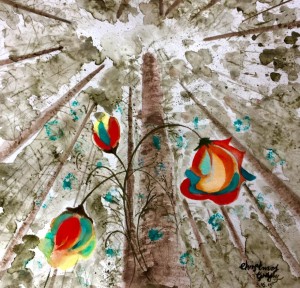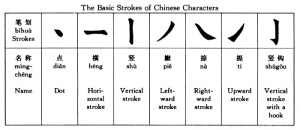Are you one of the many who love painting with watercolors and want to build up your skills? Or would love to paint more with watercolors but need to kickstart your muse? Today I am going to introduce four awesome techniques that you can start using immediately.
Before you start, keep in mind that watercolor painting requires unique skills. Unlike oil or acrylic painting, where the paints goes where you tell it, you need a bit more Zen when working with water. The water, the paint, and the paper are involved in a complex dance. The water changes the absorbency and shape of the paper when it is wet and the paint changes its appearance when it dries. So we are doing Tai Chi here, not kickboxing. We can guide the water, harness its force, but we cannot be its master.
So, without further ado, I want to share two Western watercolor techniques and two Chinese watercolor techniques. You can put these into action today, but remember, just like any skill it will take some time, love, and practice to get them right.
Western Techniques
1. Splatter
One of the hardest things to get in watercolor painting is texture. But without texture, our art can look flat. At the right moment, splatter is perfect. Since it is so uncontrolled, you will definitely want to use masking to cover up any areas that you don’t want splattered.
I like to use a tooth brush to splatter. You just dip the brush in paint and run your thumb over the bristles. You will get a wonderfully random spray of paint wherever you aim it. Take a look at my use of splatter in this painting:
2. Sgraffito
First of all, I just love to say Sgraffito, or at least pretend I know how to say it. It’s really just a fancy word for scratching. Sgraffito is another technique you can use to get texture, but is not as uncontrolled as splatter.
I use a knife, but you can use a blade, sandpaper, or anything else. Unlike in painting techniques where there are thick layers of paint, when you scratch in watercolor, you are scratching the paper. So be careful! When done right, the wet paint will pool into the scratches. Or you can carefully scratch up already dried paint.
I used sgraffito here to give texture to the bark of the tree.
Chinese Techniques
3. Color Loading
Color loading is an awesome technique for achieving layers of depth in your colors with a single brush stroke. This one is a bit tricky, so it will take some time to get used to. First, get three colors, or three different shades of the same color. Dip 2/3 of your brush in the lightest shade. Then, dip 1/2 of your brush in the medium shade. Next, dip the last 1/3 of the brush in the darkest shade. Be sure not to twirl the brush when you do this. Finally, use the brush in an almost horizontal position so that all three colors come out on the paper.
4. Chinese Brush Strokes
We have mentioned before how Chinese brush strokes are fundamental to Chinese painting. You can use them as well to try something different in your painting. There are seven different Chinese brush strokes, dian, heng, shu, pie, na, ti, and shugou. See below:
Please note that these strokes are more than just lines. Chinese calligraphy involves making sure lines are pointed in the right places, round in the right places, and thin and thick in the right places. This involves very careful and deliberate brush pressure and movement. While I’m not suggesting that you need to become a master Chinese calligrapher, try doing something different with your brush! Explore using the brush itself for different shapes and levels of thickness in your lines. If you are feeling adventurous, try to copy this Chinese character as closely as you can:
You can have a look at my paintings here. Thanks for reading!




